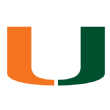Why does BPI rate Marquette higher than Duke or Kentucky?
The dog days of summer are almost over -- we're now 100 days until the Champions Classic, the official start of the 2018-19 college basketball season.
With that in mind, it's time for a summer update to ESPN's College Basketball Power Index. The BPI is a predictive metric that measures how many points above or below average a team is.
The preseason rankings are based on the following categories: the quality and quantity of the returning players on the team, including transfers and players who missed last season because of injury; recruiting rankings, both overall and the number of five-star prospects; and coaches' past performances on offense and defense.
Many of the rankings look similar to qualitative preseason top 25s, including Kansas atop the rankings, but there's also some that could cause some debate. We took a deeper look at a handful of the more notable rankings.
It's only the second year the BPI has produced a summer update, but the preseason BPI ranking in October has been fairly predictive over the past decade. Since 2007, only two national champions -- both UConn teams -- have been ranked lower than fourth in the preseason BPI ranking.
That could be good news for Kansas, Gonzaga, Tennessee or Marquette.
1. Kansas
2. Gonzaga
3. Tennessee
4. Marquette
 This one will immediately raise some eyebrows. The Golden Eagles finished .500 in the Big East last season, got pummeled in the Big East tournament by Villanova, then lost in the NIT to Penn State -- and then lost leading scorer Andrew Rowsey and his 20-plus points per game. However, the model projects Marquette to have the best offense in the country ... and the 90th-ranked defense. Markus Howard returns in the backcourt, and Sam Hauser could be poised for an all-Big East campaign. Steve Wojciechowski is expecting a big boost from his newcomers: Nebraska transfer Ed Morrow, Fordham graduate transfer Joseph Chartouny and freshman Brendan Bailey.
This one will immediately raise some eyebrows. The Golden Eagles finished .500 in the Big East last season, got pummeled in the Big East tournament by Villanova, then lost in the NIT to Penn State -- and then lost leading scorer Andrew Rowsey and his 20-plus points per game. However, the model projects Marquette to have the best offense in the country ... and the 90th-ranked defense. Markus Howard returns in the backcourt, and Sam Hauser could be poised for an all-Big East campaign. Steve Wojciechowski is expecting a big boost from his newcomers: Nebraska transfer Ed Morrow, Fordham graduate transfer Joseph Chartouny and freshman Brendan Bailey.
5. West Virginia
 The Mountaineers lose their starting backcourt of Jevon Carter and Daxter Miles from last season, but the model still likes Bob Huggins' program. That shouldn't come as a surprise, as efficiency-based models have tended to rank West Virginia favorably since it switched to the Press Virginia style in the 2014-15 season. The biggest key in the Mountaineers' efficiency rankings is the fact they beat lesser opponents by more points than some other teams near the top of the rankings, with the nonstop pressure a main cause. Huggins will lean on James "Beetle" Bolden and a trio of freshmen to replace Carter and Miles.
The Mountaineers lose their starting backcourt of Jevon Carter and Daxter Miles from last season, but the model still likes Bob Huggins' program. That shouldn't come as a surprise, as efficiency-based models have tended to rank West Virginia favorably since it switched to the Press Virginia style in the 2014-15 season. The biggest key in the Mountaineers' efficiency rankings is the fact they beat lesser opponents by more points than some other teams near the top of the rankings, with the nonstop pressure a main cause. Huggins will lean on James "Beetle" Bolden and a trio of freshmen to replace Carter and Miles.
6. North Carolina
7. Syracuse
8. Wisconsin


9. Duke
10. Virginia
11. Nevada
12. Florida
13. Michigan State
14. Kansas State
15. Virginia Tech
16. Villanova
17. Mississippi State
18. Auburn
19. Iowa
20. Alabama
21. Illinois


22. Kentucky


This is the biggest eye-opener. Kentucky is widely considered to be the primary competition to Kansas for preseason No. 1 honors, yet the Wildcats are barely in the top 25 of the BPI. In general, the BPI is lower on Kentucky -- and Duke -- than consensus qualitative rankings. In fact, Duke at No. 9 is actually higher than it was in the 2017-18 preseason rankings, when most people had the Blue Devils at No. 1. The reason behind both Duke and Kentucky's lower-than-expected rankings is the fact the model heavily weighs returning production, as history shows returning starters do better than five-star freshmen in general. Of course, Duke lost its entire starting five and Kentucky saw seven players depart from last season.
23. TCU
24. Miami
 We point out this one because the Hurricanes went 22-10 last season, lost in the first round of the NCAA tournament before seeing Lonnie Walker and Bruce Brown leave early for the NBA draft. But the model doesn't have Miami dropping too far, with the addition of Florida Gulf Coast transfer Zach Johnson providing a boost. While individual numbers are opponent-adjusted, Johnson's production at FGCU -- like every other transfer -- counts the same as a returning starter.
We point out this one because the Hurricanes went 22-10 last season, lost in the first round of the NCAA tournament before seeing Lonnie Walker and Bruce Brown leave early for the NBA draft. But the model doesn't have Miami dropping too far, with the addition of Florida Gulf Coast transfer Zach Johnson providing a boost. While individual numbers are opponent-adjusted, Johnson's production at FGCU -- like every other transfer -- counts the same as a returning starter.
25. Texas